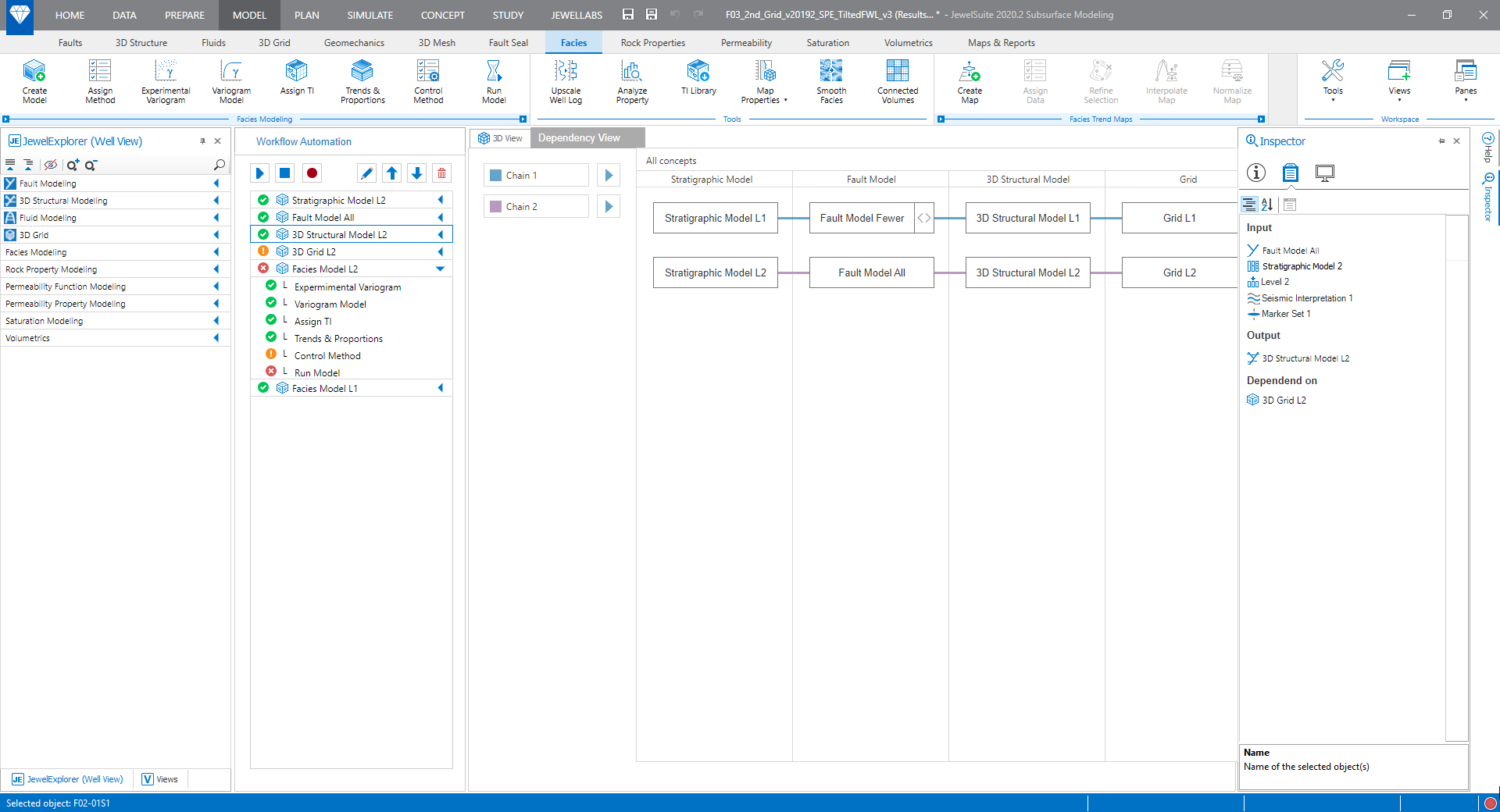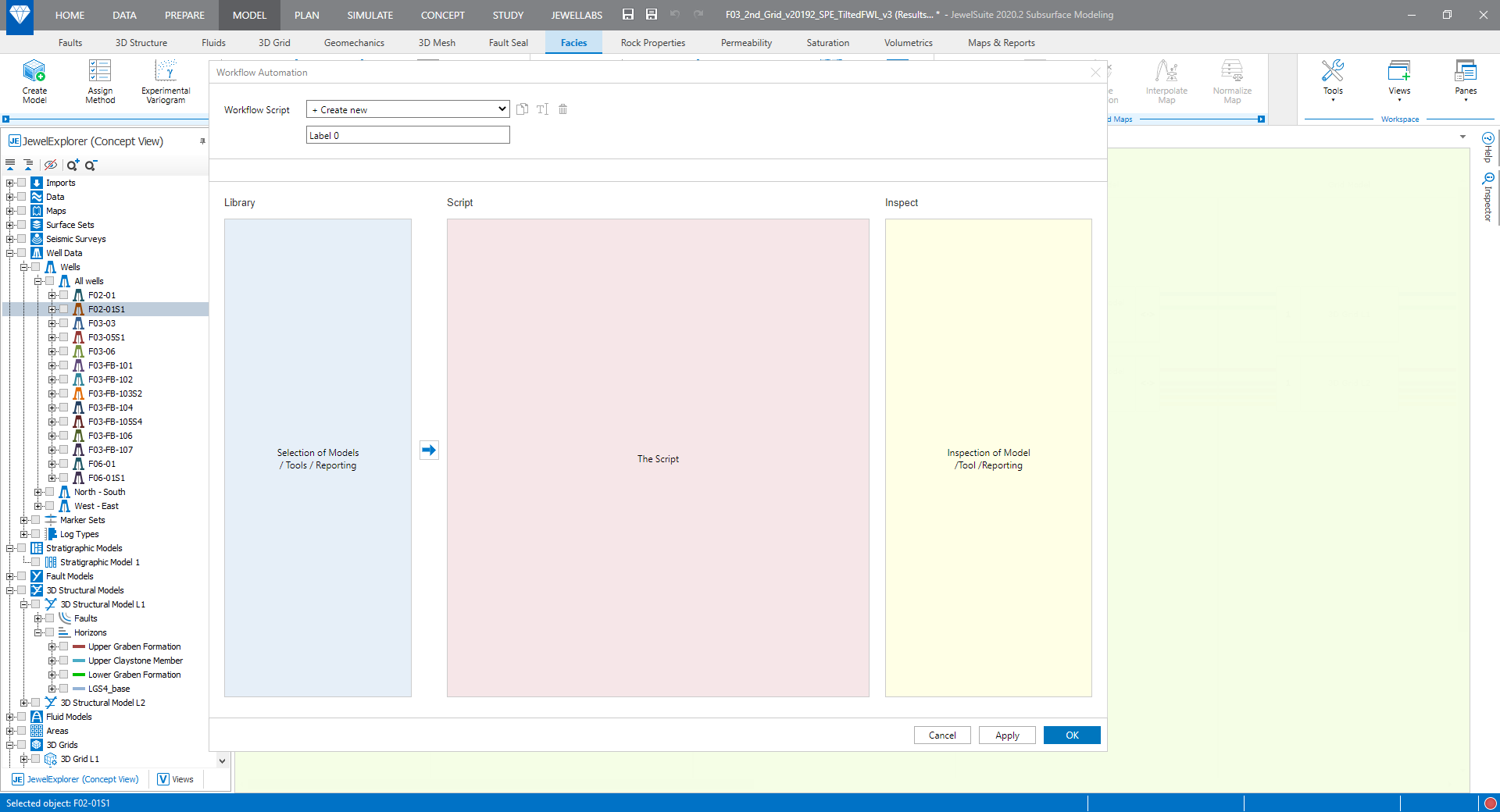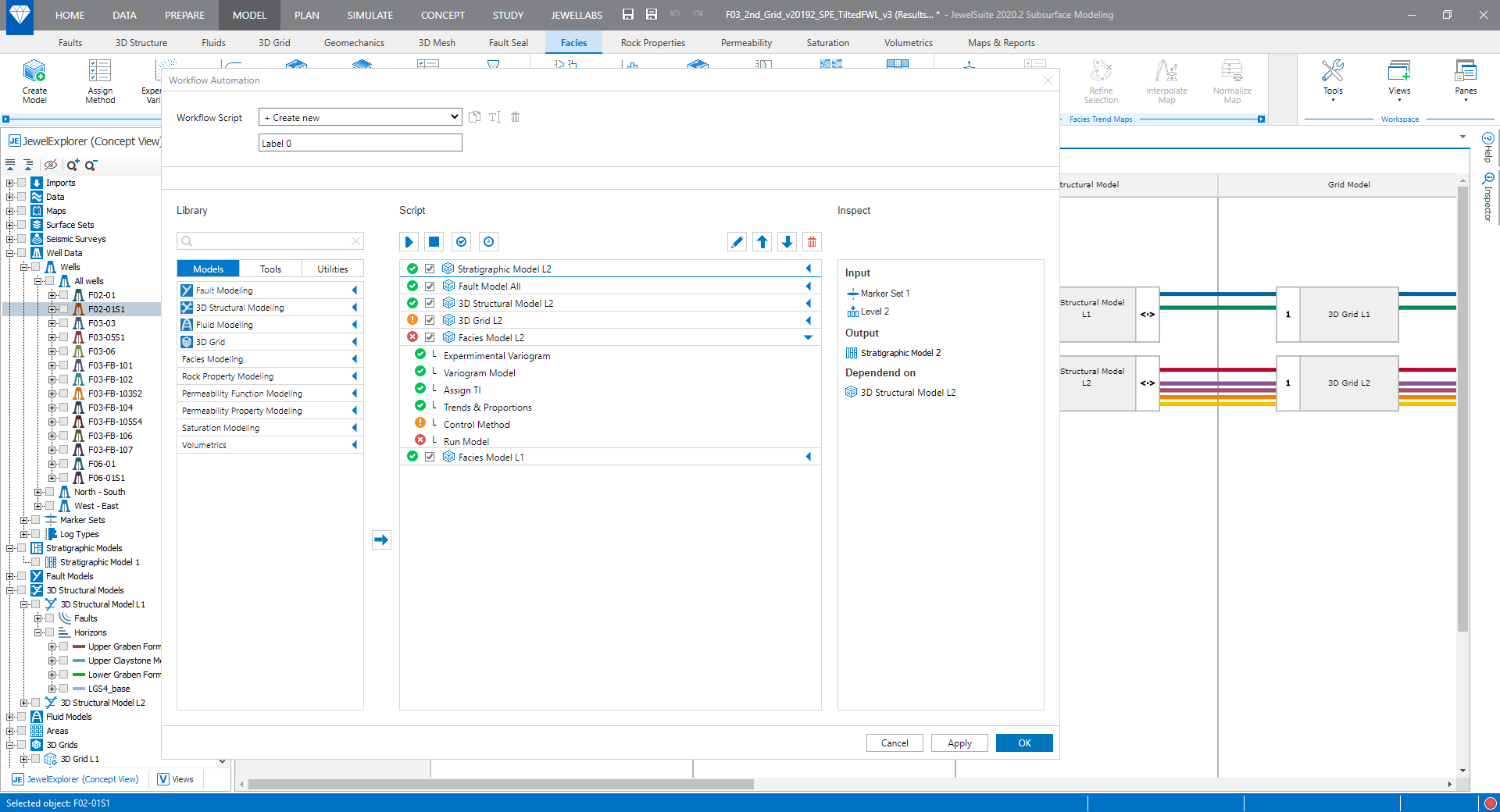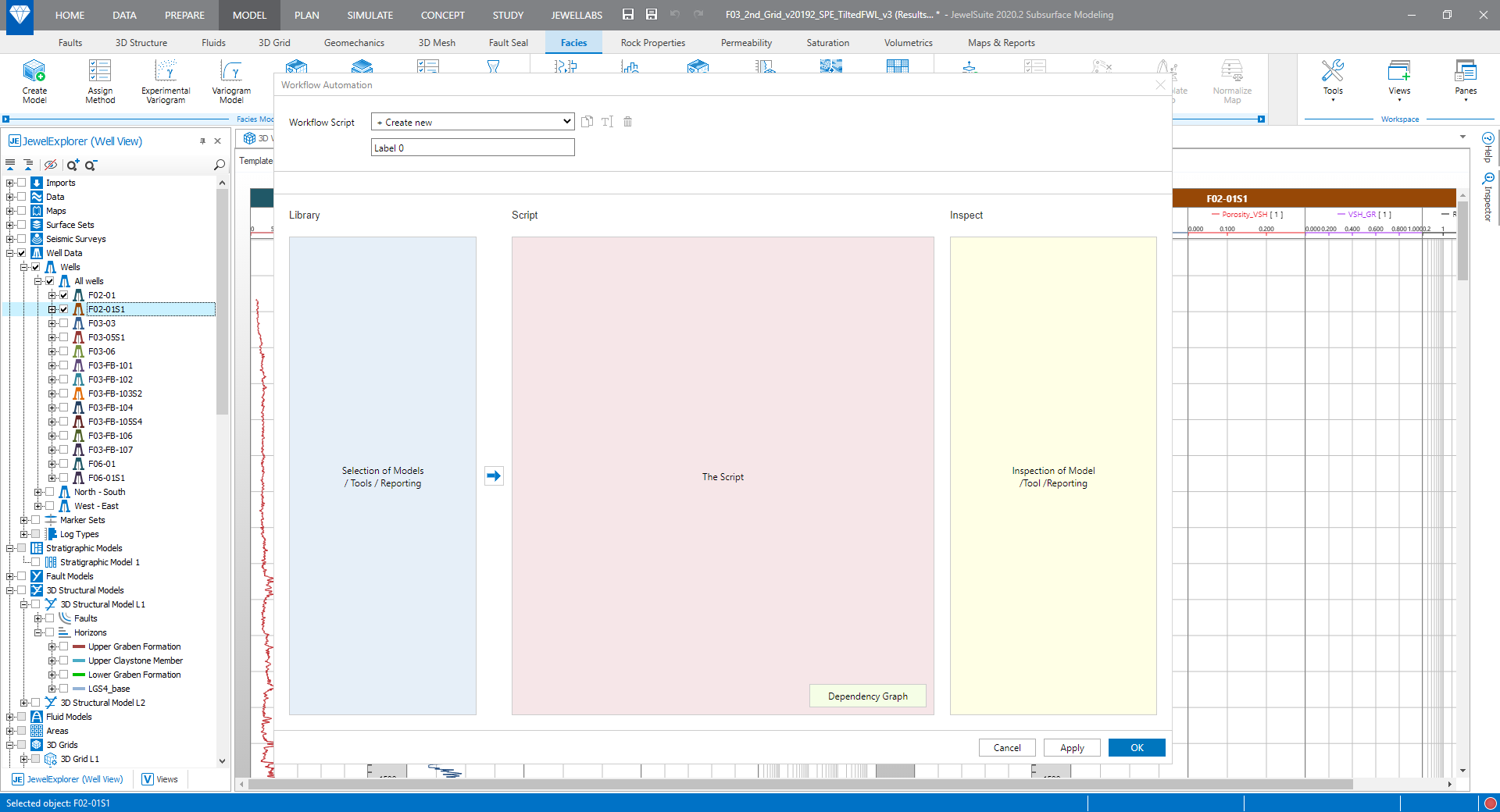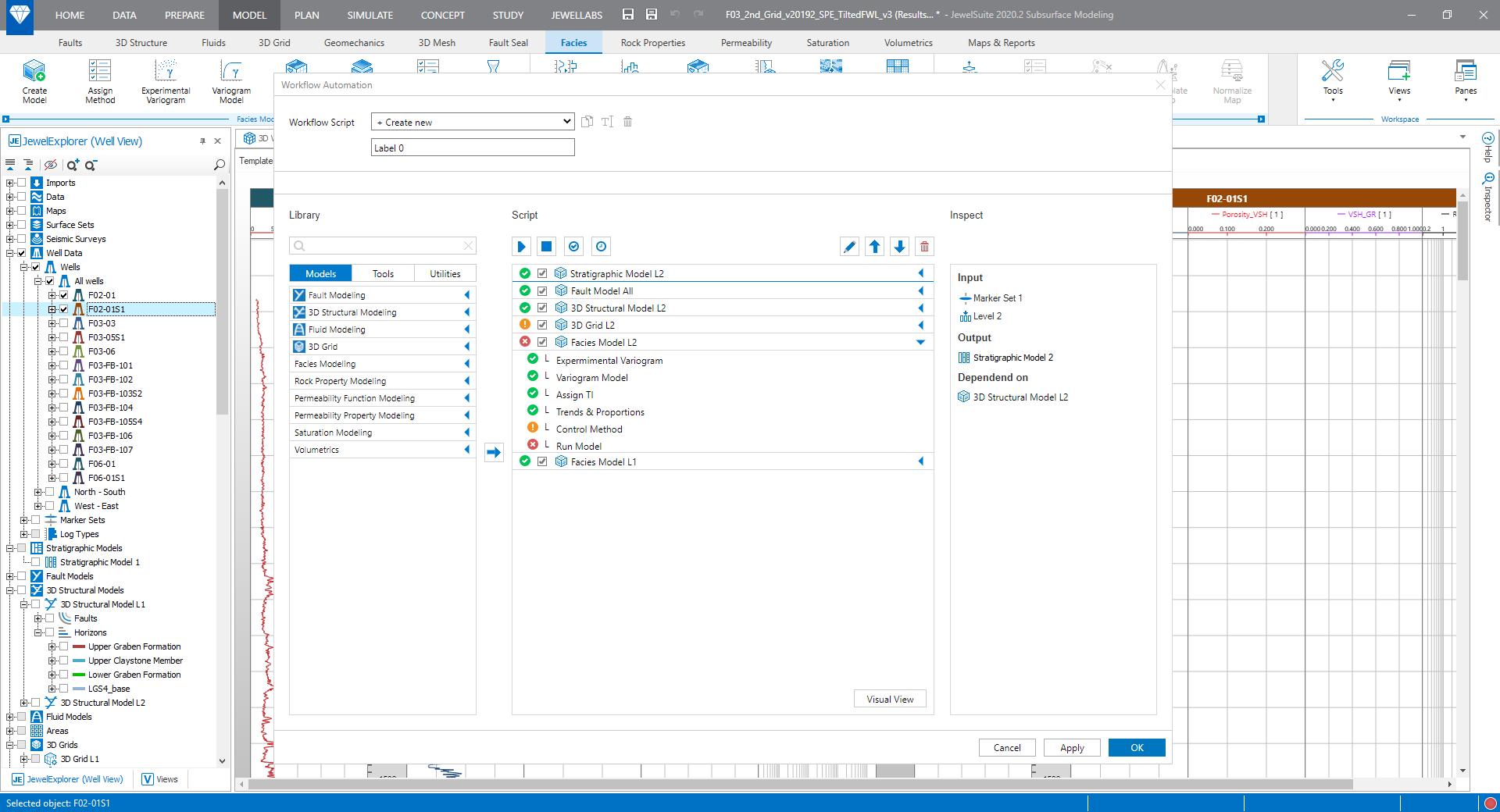Background information
When I started working at Baker Hughes, I was assigned to the Radiant Project, a joint venture between Baker Hughes & Shell. Together they are working on an application called JewelSuite Subsurface Modelling.
JewelSuite Subsurface Modelling makes it possible for users to create precise geological models. Using the application's so-called modelling workflows, users can go from seismic interpretation to a volumetric report.
Challenge
To create a geological model in 3D the users are guided trough modelling workflows which are all connected to each other. Setting up those models is time consuming and is an iterative process.

When a user receives new information or wants to try out different scenario. models change, which has an impact on the model that follow.

As a result, the user had to go through each model step by step to update it. As a conclusion, the Workflow Automation Initiative was set in motion.
Vision
To create a tool that allows automating repetitive tasks/operations and string operations:
-
to quickly reconstruct or update existing models, or parts of the model chain
-
to build multiple sets of models / objects / properties in order to test parameters, scenarios or user interpretations
-
to extend standard workflows to the end users need
-
to document all processes and settings that went into the construction of a model or object realisation
-
to incorporate research results and to enhance modelling approaches by embedding script constructs
User Centered Design Process
Empathise Phase
During the empathise phase, I began by conducting interviews to gain a better understanding of the technical design of the various modelling workflows, how they are integrated and connected in JSSM.
After the technical aspect was clear I continued with brainstorm sessions and more interviews to define the user needs, collect use cases and get requirements on the table.
In addition, I conducted desk research on competitors and other automation applications.
Define Phase
In the previous phase, it seemed that the workflow automation initiative was spread over multiple topics, such as: workflows, tools, script constructs, housekeeping, dependencies.
With this in mind, the scope was changed to prioritise the ability to modify workflows and tools and rerun them in a sequence and save it as a script. As a result, setting it up in a generic manner is key to making extending it possible.
Ideate Phase
To ensure that all the topics would fit together and all requirements would be met. Three high-level concepts have been designed. The first idea was to intergrade workflow automation fully into the JSSM. The second option was to design a stand alone workflow
automation tool and intergrade some of the topcis into JSSM. The third option was to design a standalone tool with all of the features.
After many conversations about the high-level concept, it was decided to pursue option three and develop a stand-alone tool. Technical restrictions and cost are the reasons for this.
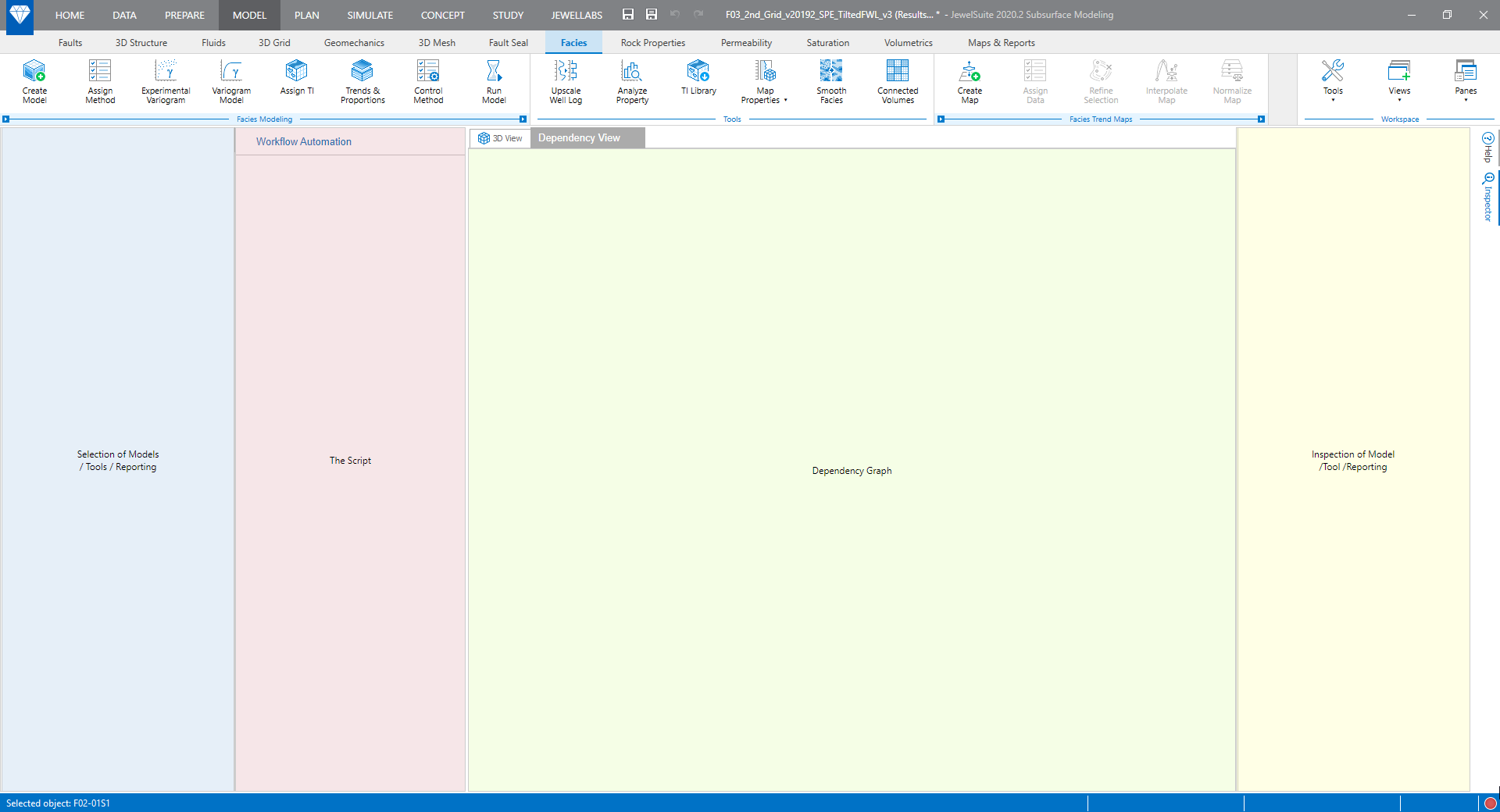
Prototype Phase
Now it was important to convert this high-level design into a low-level design and interactive prototype.

Testing Phase
To test the prototype separate usability sessions with the users where held. In these usability sessions they where presented with different challenges. All users completed the challenges at hand without any issues.
